India's Dynamic Decade
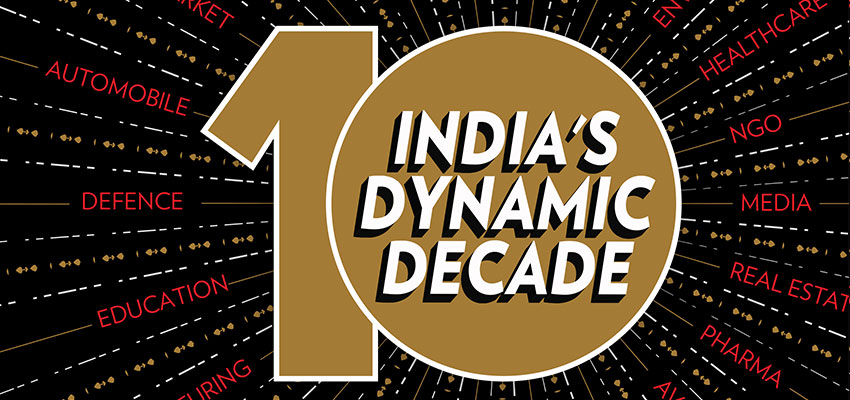
India’s growth trajectory over the past decade has been revolutionary, with key industries driving the nation’s rise as a formidable global economy. The long runway for growth has paved the way for transformation, and a look through the rear-view mirror reveals the perseverance and innovation that have brought India to the forefront of the world’s largest economies.
As Corporate Citizen celebrates its 10th anniversary, this milestone stands as a reflection of our commitment to reshaping the media landscape and strengthening our industry presence. In this Special Anniversary issue, we spotlight the last decade’s transformative journey across Indian industries, as our corporate leaders reflect on the nation’s remarkable progress in both the service and manufacturing sectors
We explore the industry-specific initiatives that have propelled India’s economic ascent, with their impact visible across sectors. These milestones, achieved through innovation and strategic growth, have set the stage for India’s continued elevation on the global economic stage
Rising above not-for-profit
Education, skills and healthcare will be the focus and future of NGOs
-Ganesh Natarajan,
Chairman of 5F
World and Lighthouse Communities

It is heartening to note that the last decade or so has seen some NGOs scale up on a never-before scale, bringing such professionalism and efficiency to their workings that any corporate or philanthropic organisation would be happy to fund them and partner with them. Plus, a lot of good, qualified people, eager to make a difference have joined this sector, so that has helped matters. Even so, there are thousands of NGOs across the length and breadth of the country that continue to work small, so it’s quite a layered scenario.
So, while the past decade has been witness to seminal changes, NGOs will have to change their outlook—better to attract young people and stay sustainable.
In the coming 10 years, what one envisages is more and more social enterprises with a mandate to make profit, so they can sustain and reach out to more people.
In the Indian scenario, NGOs have traditionally had this not-for-profit mindset, that is dependent on donations, but that is changing. NGOs realise that they have to be self-reliant. In the years to come, we will be seeing more social enterprises that will have a mandate to make profits, to stay sustainable and grow, in both the rural and urban scenario.
"While the advent of AI and technology will have the NGOs adapting and adopting the technology to reach out to more and more people and have community initiatives succeed, it is always a good idea to join hands with government bodies"
Together, they have a great role to play in keeping alive the motto “Live not just for self ”, by being a voice for the marginalised and the poor—the deserving, who need a timely hand and community enterprises that collaborate for the greater good.
While the NGO sector has already started attracting fine human talent, the increasing number of social enterprises and graduates from liberal arts colleges such as Ashoka and FLAME will attract youngsters who realise the potential for growth and social empowerment that this sector offers.
As you may know, the United Nations has included among its 17 sustainable goals: No poverty, Zero hunger, Good health and well-being, Quality education, Gender equality, Clean water and sanitation, Affordable and clean energy, Decent work and economic growth, Industry, Innovation and Infrastructure.

In India, the focus and future of NGOs will essentially be centred around education, skills and healthcare. Fitting, given the need to train, educate and vocationally train our young population. The attention and investment in skill building activities shall continue to grow. Other buzzwords will include climate change, gender sensitivity, inclusion and diversity, for the differently abled as well as the LGBTQIA+ community. While the advent of AI and technology will have the NGOs adapting and adopting the technology, to reach out to more and more people and have community initiatives succeed, it is always a good idea to join hands with government bodies.
Figure it Out
As per the NGO Darpan portal of NITI Aayog, there are a total of 2,66,022 non-profit organisations that have registered to seek grants from the ministries/ departments of union government. The Central Statistical Institute of India (CSII) reported that there were 33 lakh NGOs in India in 2023.
Education excels
The Higher Educational Landscape has seen a paradigm shift thanks to the National Education Policy (NEP) 2020 that has triggered off a wave of digitalisation, liberty in choice of subjects, skill based learning, a comprehensive and student-friendly approach
-Dr. S B Mujumdar,
Founder and President, Symbiosis
Society and Chancellor, Symbiosis International
(Deemed University)
India’s higher education landscape has undergone significant transformation over the past decade, fuelled by technological advancements, increased investments, government initiatives, and a rising demand for skilled professionals.
Private universities such as Symbiosis International University, MIT-World Peace University and Bharati Vidyapeeth, have expanded their offerings, introducing new courses in fields like data science, AI, cyber security and entrepreneurship. International collaborations between Pune universities and global institutions have facilitated exchange programmes, joint degrees, and an influx of foreign students.
To meet industry demands colleges and universities nationwide are shifting towards skill-based and professional courses. Programmes in information technology, digital marketing, healthcare, and fintech have gained prominence, and incubators within institutions are supporting entrepreneurship by offering resources for students to develop startups. Educational institutions have embraced online learning and blended learning models, especially accelerated by the pandemic. Massive Open Online Courses (MOOCs) through platforms like Coursera and edX are now integral to curricula, and AI-driven tools have enabled personalised learning and streamlined assessments.
There is a growing emphasis on research and development (R&D), with institutions like Savitribai Phule Pune University (SPPU), IISER and DIAT emerging as research hubs. Government initiatives such as Startup India and Make in India, have encouraged the establishment of innovation centres to drive product development and entrepreneurship.
Pune, known as the “Oxford of the East”, has seen an increase in international students from Africa, the Middle East, and South Asia. Universities have adapted by offering globally inclusive curricula, courses in English, and specialised programmes to support cultural and academic integration.
"Industry-academia partnerships have flourished, bridging the gap between theory and practice through internships, live projects, and collaborative research"

Infrastructure development has led to smart campuses with digitised libraries, tech-enabled classrooms and advanced laboratories. Modern residential facilities and campus management systems have also improved the student experience.
The National Education Policy (NEP) 2020 has introduced major changes, including multidisciplinary education, flexible degree pathways and the Academic Bank of Credits (ABC) system. Government funding for STEM education and vocational training has increased, further supporting higher education expansion. Sustainability and social responsibility have become focal points. Campuses are adopting eco-friendly designs, waste management, and green energy practices, while integrating social responsibility programmes like community outreach and NGO partnerships into the curriculum.
Industry-academia partnerships have flourished, bridging the gap between theory and practice through internships, live projects, and collaborative research. The proximity to industrial hubs like Hinjawadi IT Park and Chakan Industrial Area has enabled local institutions to tailor programmes to industry needs, creating strong career opportunities for graduates.
Liberal Arts and multidisciplinary education are on the rise, with institutions like Flame University and Symbiosis School for Liberal Arts offering programmes that blend humanities, social sciences, business, and technology.
India’s higher education sector has dynamically evolved, driven by technology, global collaborations, new policies, and the demand for specialised skills. These changes have enhanced the quality of education and solidified Pune’s position as a leading educational hub in India and beyond.
Figure it Out
As per the India Brand Equity Foundation (IBEF), the education market in India is expected to amount to US$ 225 billion by FY25. From April 2000-March 2024, Foreign Direct Investment (FDI) equity inflow in the education sector stood at US$ 9.51 billion.
Where milk meets magic
In the evolution of the Indian dairy industry over the past decade, we have had steady growth. The industry is one with a rich past and a promising future
-Rajiv Mitra,
Independent Director;
Member, CII Apex Committee on Dairy,
Poultry and Fisheries
Sip by sip, generation by generation, this magical misty white liquid has blessed millions and continues to nourish and uplift people worldwide. It goes without saying that milk and milk products are sure a boon to mankind. The Indian dairy industry has flourished since its inception and has grown more so in the past decade. Stats suggest, the dairy market has reached a value of Rs 16,792.1 billion in 2023 and is projected to reach Rs 49,953.5 billion by 2032. The past decade alone has seen the dairy sector grow by an impressive 15% CAGR, underscoring India’s dominance in both dairy production and consumption worldwide.
This growth is making India a superpower in the global dairy production arena. Studies prove that for the last 30 years, India has consistently maintained its position as the top global milk producer, contributing to approximately 25% of worldwide dairy output. In 2023, India produced around 235 million tonnes of milk. Forecasts by the NITI Aayog suggest that this number will likely reach 300 million tonnes by 2030. With dairy and packaged foods comprising about 45% of Indian household expenditure, the sector plays a pivotal role in the economy and evolving consumer preferences.
Veganism is increasingly becoming a trend around the world, and most importantly in our country too. Dairy and poultry stalwarts feel-globally, veganism represents less than 1% of the population, so its effect on the dairy market is minimal. Having said that, they aren’t taking this trend lightly. Many food companies are experimenting with plant-based alternatives, including milk substitutes, to meet diverse consumer needs. In India, per capita milk consumption is relatively low, so veganism won’t grow at the expense of dairy. Instead, plant-based alternatives will likely serve as an additional market. With rising disposable income and urbanisation, traditional dairy products such as cheese will also see increased demand, alongside the growth of vegan products.

"For the last 30 years, India has consistently maintained its position as the top global milk producer, contributing to approximately 25% of worldwide dairy output"
The plant-based milk market is expanding, but it is still too small to significantly impact the dairy industry in the near future. Its larger impact may come over a more extended period.
Several policies in our country are helping the dairy industry grow. National Programme for Dairy Development (NPDD), Rashtriya Gokul Mission, and Animal Husbandry Infrastructure Development Fund (AHIDF) - these initiatives amplify production and infrastructure, and increase market access. Both state and central governments are providing support, particularly in large milk-producing states like Andhra Pradesh and Maharashtra. Incentives include subsidies, tax benefits, and Production Linked Incentives (PLI), introduced postCovid to help the sector, though the dairy industry is largely self-sustaining, with about 60% of operations managed by private entities.
The dairy industry in India is one with a rich past and a promising future. With that, there needs to be increased awareness and commitment towards quality of input, processes and final produce to gain the confidence of the global consumers. While we have had steady growth, in the past decade, the coming years will see accelerated growth due to investments in infrastructure, technological advancements and automation and consumer shift towards value-added dairy products.
Figure it Out
As per Invest India, India is the highest milk producer and ranks first position in the world contributing 25% of global milk production. The milk production of India has registered 58% increase during the year 2014-15 and 2022-23 and increased to 230.58 Mn Tonnes in the year 2022-23.
Tarikh Pe Tarikh, it's still an ongoing trend
Indian law system has seen some momentous judgements in the past decade. The following evaluation talks about the achievements, challenges, and an aspiration for a more efficient judiciary
-Advocate SK Jain
Everyone surely remembers the iconic scene where Bollywood actor Sunny Deol, raises his voice in anger in the courtroom drama movie Damini, exclaiming “Tarikh Pe Tarikh”. Little did we know even 30-years later, we would still live with that dialogue. This enduring phrase has become a reality, reinforcing the belief that “no one should have to climb the stairs of court”. There has been a noticeable rise in postponed court dates in the past decade. This trend can be attributed to several factors—judges and lawyers often struggle to grasp the essence of cases, and there are significant issues such as lack of resources, judicial backlogs, and legal complexity.

Our law system has evolved drastically. While there has been a rise in pending cases, divorce filings and false cases, there is still hope. The light at the end of the tunnel can be seen by adoption of technology. Online procedures and video conferencing is expediting judicial hearings and reducing trial durations. Furthermore, government policies are attracting numerous multinational companies. The growing presence of national and international law firms is reshaping legal practices, resulting in new agreements that facilitate cooperation and technology transfers.
Some of the iconic judgments that have made headlines are - the decriminalisation of Section 377, the abolition of Article 370, the Vodafone case where the Supreme Court held that India lacks jurisdiction to tax certain offshore transactions involving multinational corporations, and the National Judicial Appointments Commission (NJAC).
With notable mentions, the Supreme Court struck down the circular issued by the Reserve Bank of India’s (RBI's) 2018 blanket ban on virtual currency trading, which had restricted financial entities from dealing in cryptocurrencies.
"Our law system has evolved drastically. While there has been a rise in pending cases, divorce filings and false cases, there is still hope. The light at the end of the tunnel can be seen by adoption of technology"
In recent years, divorce rates in India have been on the rise, often accompanied by false case filings in personal disputes. The trend may stem from the shifting dynamics in relationships. Many relationships are formed without a commitment to long-term compatibility, leading to unmet expectations. When these expectations are not met, some individuals may resort to filing serious complaints such as harassment or assault. This trend appears to be influenced by various factors, including the fast-paced work culture, particularly in the IT sector, as well as changing social norms driven by the proliferation of dating apps, TV shows, and social media. With that, the tendency for women to file relationship-related complaints and for men to pursue false property claims, reflects a complex socio-legal issue in India.

There are thousands of pending cases in the Supreme Court, and over 25% of the cases are awaiting resolution in the High Courts. To address them there should be an increase in the number of judges, and enhancing trial court responsiveness could expedite case outcomes.
Although, the past decades progress looked sluggish this analysis ends on a positive note. At first glance, the changes may seem subtle, however, on closer inspection, India has indeed become more inclusive, embracing principles of equality and progress. This is just the beginning, the future is undoubtedly bright.
Figure it Out
As per the Mordor Intelligience’s Market Size Of India Legal Services Industry Report, the India Legal Services Market size is estimated at US$ 2.34 billion in 2024, and is expected to reach US$ 3.18 billion by 2029, growing at a CAGR of 6.28% during the forecast period (2024-2029).
Food for thought
Malnutrition will be a thing of the past in the next ten years, even as a discerning and knowledgeable customer emerges the king, and technology as the all-important game changer. At the same time, sustainability, waste management and carbon footprint mapping shall be the focus of the Indian food industry as it goes from strength to strength
-Anand Chordia,
Director, Innovation and Technology, Suhana Spices and Founder,
The Eco Factory Foundation (TEFF), Pune

The food industry has evolved greatly over the last decade. There are quite a few reasons for this, the primary one being that the sector which has always been unorganised, has become more and more organised. Indian brands are playing a crucial role in the global marketplace and Indian food is increasingly getting popularity and acceptance due to its simplicity and health aspect.
We have lots of tasty vegan and vegetarian options, which are the need of the hour. Of course, health is a tricky aspect. How a seller looks at it versus what a buyer looks at it versus what actual good health is, are different aspects of it. But, there are many activists working across India to spread awareness on healthy food choices. As health becomes a key concern, it’s important that the product label does not deceive the customer in anyway as to the ingredients. We are looking at an increasingly aware and empowered customer who is knowledgeable and discerning about what he wants, and so the industry will have to work keeping this in mind. It must devote itself to solving the customer’s problems and answering his questions.
Technology has played a vital role in scaling up Indian food industry in the last decade. Infrastructure within the country has become strong and thus the logistics issues are resolved as well. Concepts like frozen food, ready to eat options and instant mixes are growing very fast. I am happy to say that the education sector and all the universities and institutes in India are doing a brilliant job of delivering great food ideas to the Indian industry. Lots of start-ups have come up in this space and it’s exciting times ahead for food and agro-products industry.
"The Internet of Things (IoT) and Artificial Intelligence (AI) will play a big role in the Industrial Revolution 4.0, which will change the face of the food and agro-based industries"
The Internet of Things (IoT) and Artificial Intelligence (AI) will play a big role in the Industrial Revolution 4.0, which will change the face of the food and agro-based industries. Besides, our agriculture is also becoming more organised, thanks to structures like Farm Producing Companies and Farm Producing Organisations, which are making the supply chain transparent, organised and traceable.
Also, there will be huge stress on growing food products with minimal pesticides because of the large, upcoming consumer demands, both in India, as well as globally. As technology becomes cheaper and easier to access, its impact on our daily lives will be stronger. The difference between the decade gone by and the forthcoming decade are information and the right interface to buy and sell products. More and more smart factories will be established in the food sector. The other areas of focus for the food industry will be waste management, sustainability and carbon footprint mapping. This emphasis on responsibility is what will take the Indian food industry ahead globally.
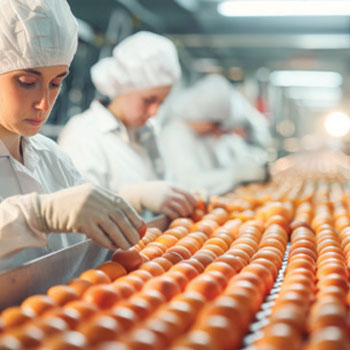
Luckily, science is evolving very fast and can address issues at different ends of the spectrum. Thus, on one end, we are talking about nutritional delivery through high quality products, on the other end, we are talking about malnutrition, a persistent and deeply troubling issue for rural parts of India. Science and technology will play a vital role at both ends, and I am sure that the country will be able to solve the malnutrition issue over the next ten years.
Figure it Out
As per India Business Equity Foundation(IBEF), the market size of food processing sector in India is estimated to reach US$ 1,274 billion in 2027 from US$ 866 billion in 2022. The growing consumption of food is expected to reach US$ 1.2 trillion by 2025-26.
Agriculture irrigated with innovation
India's agricultural sector is experiencing a period of unprecedented growth and modernisation with agri-tech, a shift to high-value crops, and improved farming inputs
-Shashank Kumar,
CEO and Co-founder, DeHaat
In India, the issue of small landholding among farmers is a well-known challenge. On an average, each farmer holds just about one and a half hectares, and over time this figure has been steadily declining. This reduction is largely due to the division of family lands as families grow, leading to a reduction in per-farmer landholding.
Alongside, this climate change has become a pressing concern. Over the past decade, for instance, soil temperatures have risen by 1.5 to 2 degrees Celsius, a shift that directly and adversely affects crop yield and productivity, and another consequence is the diminishing water table.
Over the last 10 years, India’s agriculture has gradually embraced agri-tech solutions. Advancements in precision agriculture, enhanced supply chain platforms and data-driven tools, allows farmers to plan cropping patterns effectively.
Another transformative trend has been a significant shift in crop patterns. Historically, staple crops, like cereals and grains, occupied most of the country’s cultivated land. Over the past ten years, however, horticulture of fruits and vegetables has claimed a growing share of agricultural acreage, and today its production has surpassed 300 million tons, overtaking staple crops in volume. This shift is financially beneficial, as horticultural crops often yield higher returns due to their regenerative nature and shorter harvest cycles.
Advancements in agricultural inputs have also played a crucial role. Enhanced farming practices, better-quality seeds, and advanced agrochemicals such as neem-coated and nano urea have improved crop resilience and productivity. These inputs, coupled with innovative practices, have contributed to a more sophisticated and sustainable agricultural model in India.
On the digital front, India’s rural landscape has changed dramatically. Mobile penetration and internet access are now widespread, reaching nearly every farmer or at least one family member in rural households, enabling them to explore resources online for insights and guidance on farming practices.
"Over the past four to five years, agritech investments have surged. Today, India is home to over 2,000 agritech companies, each bringing diverse approaches, business models, and regional focus"

Government initiatives in digital infrastructure and financial inclusion, with programmes like Direct Benefit Transfers (DBTs) and various financial inclusion schemes, have improved bankability across the agricultural sector. Farmers now have bank accounts and use digital payment systems like UPI, allowing them to transact digitally rather than relying solely on cash. This transition opens doors for partnerships with agritech companies and larger agricultural businesses, which previously struggled with the limitations of cash-based transactions.
Enhanced connectivity through better roads and increased access to electricity, has made rural areas more accessible and attractive for agribusiness investments. This has encouraged companies to set up units closer to farming communities, where they can offer essential post-harvest facilities.
During the Covid pandemic, many rural migrants returned to their villages from urban centres, and an estimated 30-35% have not returned to the cities post-Covid. This shift highlights how improved rural conditions, made possible by better infrastructure, have influenced individuals’ decisions to stay.
Over the past four to five years, agritech investments have surged. Today, India is home to over 2,000 agritech companies, each bringing diverse approaches, business models, and regional focus. DeHaat, a standout example, in ten years has grown into one of India’s leading agritech firms. DeHaat has expanded to serve 12 states, 130 districts, and approximately 1,25,000 villages, achieving an anticipated revenue of nearly ₹ 4,000 crores in FY25.
The government has shown openness to partnerships with agritech enterprises, aiming to integrate digital public infrastructure (DPI) with agritech initiatives to better support farmers.
Figure it Out
As per Government of India, the area under commercial/ cash crops has increased to 18,935.22 thousand hectares in agriculture year 2023-24. Today, India is home to over 2,000 agritech companies, each bringing diverse approaches, business models, and regional focus.
Stock markets soar
With a transformative development of the Indian stock market from 2014 to 2024, India is on the twin planks of economic growth and global strength. This decade has been instrumental in positioning India as a key player in the global financial landscape
-Ajay Bagga,
Stock Market Expert and Member, Board of Directors, SSRDP Pvt. Ltd.
It has been the challenge for Prime Minister Modi to take on the twin tasks of making India rich and strong. The challenge is high, as India needs to reach a per capita income of USD 15,000 before it starts to get demographically old.
One indicator of the progress made by India on the twin planks of economic growth and global strength, is the transformative development of the Indian stock market from 2014 to 2024. As a period characterised by economic reforms, technological innovations, record-breaking indices, and a surge in global and domestic investor participation, this decade has been instrumental in positioning India as a key player in the global financial landscape.
Here’s a comprehensive analysis of the key developments, milestones, and trends that have defined the Indian stock market over the past ten years.
In just market capitalisation terms, Indian stocks have grown from USD 1.2 trillion in March 2014 to USD 5.4 trillion in September 2024. In 2014, the Nifty 50 and BSE Sensex stood at approximately 7,600 and 25,000 levels, respectively. At the recent all time high reached in September 2024, these indices breached significant milestones, with Nifty 50 crossing the 26,000 mark and Sensex soaring past 82,000.
These returns were bolstered by strong earnings growth, policy reforms, and increased liquidity in the system. In 2013, India was categorised as a part of the “Fragile Five” economies, with elevated bank NPAs, high debt levels for corporates, a high inflation and a high fiscal deficit burden. Over the last 10 years, India has emerged as the fastest growing major economy in the world. Banks have cleaned up their NPAs with over Rs 16 lakh crores of NPAs being written off their balance sheets. Indian corporates have deleveraged and the Corporate Profits to GDP ratio has recovered from under two to nearly six.
One of the defining features of this decade was the explosion of initial public offerings (IPOs). Several companies emerged as market leaders after listing, reshaping the sectoral landscape of the market. Public sector listed companies rose to 105, with many of the stalwarts in the Indian Railways stable getting listed. Ecommerce, digital and quick commerce saw many listings, while the listing of the insurance behemoth LIC was a key move in enhancing the investment opportunities for investors. The move by the Korean auto major, Hyundai motors to list on the Indian bourses represents a potentially significant trend.
"The Indian stock market’s journey from 2014 to 2024 has been one of evolution and resilience"

Another mega trend is the emergence of the Indian retail investors as a key participant in the wealth creation journey of the Indian stock markets. With households investing over Rs 5 lakh crores per year in stocks, directly as well as through institutional avenues like insurance, mutual funds, National Pension Scheme, EPFO, the share of domestic funds in the Indian markets has reached a significant 24%. In 2014, equity mutual fund assets under management (AUM) stood at approximately Rs 2.5 lakh crore. By 2024, this figure surpassed Rs 20 lakh crore, reflecting a robust CAGR of over 20%. A significant driver was the systematic investment plan (SIP) revolution, which saw monthly inflows rise from Rs. 3,000 crore in 2014 to over Rs. 25,000 crore by 2024.
The Indian stock market’s journey from 2014 to 2024 has been one of evolution and resilience. Driven by economic reforms, technological advancements, and an expanding investor base, the market has emerged as a robust platform for wealth creation. As India continues its ascent as a global economic powerhouse, the stock market is poised to play an even more critical role in shaping the country’s financial and economic future.
As India climbs to number 4 and then number 3 in the global economic output rankings, the Indian stock markets will also gain in stature and in global allocations. We see a Nifty 50 level of 75000 within the next decade and a BSE Sensex level of 2,50,000 is very possible by, or even before, 2034.
Figure it Out
Indian stocks have grown from US$ 1.2 trillion in March 2014 to US$ 5.4 trillion in September 2024. In 2014, the Nifty 50 and BSE Sensex stood at approximately 7,600 and 25,000 levels, respectively.
Heritage hotels on a high
Hospitality industry, especially heritage hotels, has seen significant evolution in the types of experiences offered and the clientele they serve
-Aman Nath,
Chairman, Neemrana Hotels
In the early days, palatial properties in Jaipur, Udaipur, and Jodhpur, were converted into hotels, not always with the amenities one might expect. These royal estates often retained a “Maharaja” or “Maharani” suite, with some spaces like stables being creatively repurposed into guest rooms. This initial phase allowed travellers a taste of aristocratic life, although facilities were still limited compared to modern hotels.
The next phase began in 1986, with a shift to "experiential tourism". Pioneers such as the Neemrana Group started restoring heritage properties beyond the grand palaces, emphasising unique, authentic experiences over opulence. These included forts, riverside properties, and coastal buildings, many of which had been abandoned ruins. Their appeal was in their natural surroundings and unique historical context, enabling guests to experience India's rich past and distinctive landscapes. According to hospitality experts, the placement of these properties on scenic hillsides, riverbanks, and beaches heightened their allure, allowing visitors to wake up in landscapes with historical depth and unmatched beauty.

In the 1980s and early 90s, foreign tourists made up about 60 per cent of guests at heritage hotels. At the time, the concept of luxury tourism was relatively new for many Indian travellers. Today, however, India’s robust economy and evolving tourism trends have transformed the demographics of the hospitality sector, with a rising influx of domestic tourists. Indian travellers now make up a large proportion of guests at heritage hotels, reversing the earlier trend.
With increased international exposure, Indian tourists have also adapted their behaviours to international standards, showing greater respect for heritage property customs and a more evolved approach to tourism. The staff at these hotels has likewise adopted a balanced approach, providing attentive service that respects guests' privacy while being accessible and friendly.
"India’s robust economy and evolving tourism trends have transformed the demographics of the hospitality sector, with a rising influx of domestic tourists"
The impact of Covid-19 on the hospitality industry highlighted differing approaches among heritage hotels and large chains. While some chains were forced to make staffing cuts, Neemrana Group maintained its workforce, demonstrating a family-like loyalty. This approach fostered a sense of ownership among staff and maintained morale, ensuring the continued appeal of these heritage properties.
Post-pandemic, the "Dekho Apna Desh" initiative by Prime Minister Modi, has further spurred domestic tourism. As travel restrictions lifted, Indian tourists rediscovered their country’s attractions, deepening their appreciation for cultural experiences close to home.
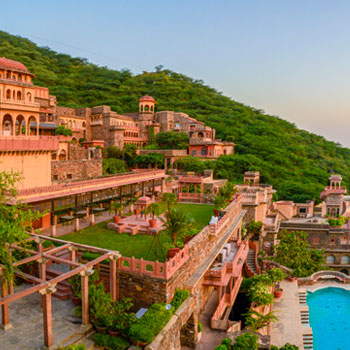
Looking forward, experts see potential for India’s tourism model to mirror France's success, where tourism numbers exceed the population. With diverse landscapes, historic sites, and a hospitable culture, India holds the ingredients to attract even more visitors.
However, sustainable growth, backed by consistent government policies, remains essential for realising this vision. By expanding access to heritage sites and enhancing infrastructure, India can truly open its doors to a world eager to experience its unique heritage.
Figure it Out
As per Mordor Intelligence trends and forecast, the market size of hospitality industry in India is estimated at US$ 247.31 billion in 2024, and is expected to reach US$475.37 billion by 2029, growing at a CAGR of 13.96 percent.
Electric Vehicles need a boost
The growth of India’s EV sector has been significantly fuelled by government subsidies, especially for domestically manufactured EVs and components
-Arun Firodia,
Chairman, Kinetic Group
Pune, often called the “Detroit of India”, is a hub for manufacturing two-, three-, and four-wheelers, supported by a robust ancillary industry. The city’s growth will be propelled by innovation and the transition to electric vehicles, creating a high demand for engineers skilled in battery technology, electronics, and artificial intelligence.
The growth of India’s EV sector has been significantly fuelled by government subsidies, especially for domestically manufactured EVs and components. Subsidies not only lower the initial cost for consumers but also promote local manufacturing under initiatives like Make in India. Unfortunately, recent budget constraints have led to a reduction in government support. This reduction could increase the import of EV components and vehicles, particularly from China, potentially undermining domestic manufacturing efforts.
One of the primary attractions of EVs is their low operating cost per kilometre, which is crucial for mass adoption. However, affordability extends beyond operating costs. Addressing the high upfront cost of EVs, particularly through subsidies and incentives, remains vital for broader market penetration.
A robust charging infrastructure is essential to ease range anxiety and boost consumer confidence in EVs. Currently, the number of EV charging stations in India is inadequate. Public-private partnerships must play a central role in accelerating the establishment of charging networks. Ideally, cities should have one charging station every 3 kilometres, while highways should have one every 25 kilometres.
The cost of batteries remains a major hurdle for EV affordability. Lithium-ion battery prices are gradually declining, but further innovation is necessary. Alternatives like solid-state batteries and sodium-ion batteries, which use locally available materials, are being explored. Efforts are also underway to establish giga factories for battery manufacturing, reducing reliance on imports.
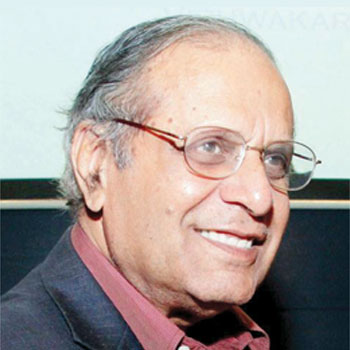
Transitioning public transport to electric power can significantly reduce pollution due to the sector’s heavy usage. Municipal corporations across India should prioritise adopting electric buses to set an example and address environmental concerns.
EVs are increasingly becoming the preferred choice for last-mile delivery services due to their cost-effectiveness and zero emissions. This segment will likely see continued growth as e-commerce expands across India.
"Transitioning public transport to electric power can significantly reduce pollution due to the sector’s heavy usage"
International players like Tesla, Hyundai and BYD, are expanding their presence in India, bringing advanced technologies and competitive products to the market. Their involvement will help drive innovation and consumer confidence.
As EV adoption grows, the demand for skilled engineers, particularly in battery technology, electronics, and artificial intelligence, will increase.
While the potential is immense, challenges persist. Rural and semi-urban areas lag behind urban centres in terms of EV charging facilities. Expanding this network is critical for widespread adoption. Despite lower operating costs, the high initial cost of EVs remains a barrier for many consumers.
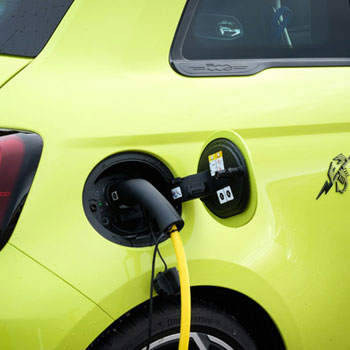
Continued government support and innovative financing options are necessary to address this issue. Many consumers are hesitant to adopt EVs due to range anxiety and a lack of awareness about the technology. Educational campaigns and improved infrastructure can help alleviate these concerns.
Figure it Out
As per the India Brand Equity Foundation (IBEF),in January 2024, the total production of passenger vehicles, three-wheelers, two-wheelers, and quadricycles was 23,28,329 units.The global EV market was estimated at approximately US$ 250 billion in 2021 and by 2028, it is projected to grow by 5 times to US$ 1,318 billion.
Figure it Out
As per the India Brand Equity Foundation (IBEF),in January 2024, the total production of passenger vehicles, three-wheelers, two-wheelers, and quadricycles was 23,28,329 units.The global EV market was estimated at approximately US$ 250 billion in 2021 and by 2028, it is projected to grow by 5 times to US$ 1,318 billion.
It’s making in India
The ‘Make in India’ initiative has propelled the manufacturing industry to innovate, produce and market nationally and internationally in defence hardware and equipment, as well as automobile components
-Ram Bhogale,
Chairman, Bhogale Automotive Pvt. Ltd.
The push for manufacturing arose from the steady decline in the percentage of GDP generated through manufacturing since 2000, or even earlier. India was skipping the manufacturing phase, moving from agriculture directly to services. Manufacturing, however, creates more blue-collar jobs than the service sector. The need to revive manufacturing became evident.
In 2014, Prime Minister Narendra Modi launched the ‘Make in India’ programme, prioritising key industries like defence manufacturing. Until then, private-sector defence manufacturing was nearly non-existent, with most production limited to inefficient public-sector units. Today, Indian companies manufacture world-class war hardware and consumables, including shells, bullets, armoured vehicles, and long-range missiles. Guns like Bofors are now entirely indigenously produced, along with drones, radars, and other advanced equipment.
Approximately 50–55% of India’s defence procurement budget is now spent on domestic manufacturers. From zero defence exports, India achieved₹20,000 crore in exports last year, supplying affordable, high-quality war hardware to nations across the Far East and Africa. Indian products, including Bofors-like guns, small arms, and short-range missiles, are competitively priced compared to European offerings. Indian manufacturers are also excelling in surveillance drones and unmanned vehicles, technologies poised to dominate future warfare.
While there is still a long way to go, India’s defence manufacturing sector has made a robust start, marking significant progress under the ‘Make in India’ initiative. The automobile industry heavily depends on the chip-making industry, as seen during Covid-19 when chip shortages in the Far East affected car production. While cars may not rely on electronics as heavily as cell phones, they are still quite integrated. The automobile industry is also linked to other industries, including chemicals.
"From zero defence exports, India achieved ₹20,000 crore in exports last year, supplying affordable, high-quality war hardware to nations across the Far East and Africa"

About a decade ago, the auto industry heavily relied on importing key components, often sourcing from China to reduce costs. However, the Indian auto component manufacturing sector has transformed significantly. For instance, Chhatrapati Sambhajinagar, now plays a pivotal role in the global automotive supply chain. Most cars worldwide likely have some part made in this region. Indian manufacturers export to over 70 countries, supplying components to brands like General Motors, BMW, Volkswagen, and leading Japanese carmakers.
Even Tier-2 and Tier-3 industries in India have achieved remarkable technological advancements, ensuring high reliability and quality in their components.
India has become a significant exporter of electrical wiring harnesses and electronic components, areas that were once dependent on imports. Beyond steel castings and forgings, Indian manufacturers have excelled in non-ferrous castings, forgings, and machining, entering entirely new markets in recent years.
Lightweighting in cars, which involves replacing steel parts with aluminium or alloy components, has driven another innovation wave. Aluminium reduces weight substantially while maintaining performance. Across India—from South India to Maharashtra to Delhi—manufacturers have mastered the production of aluminium and aluminium alloy components through casting, forging, and machining.
If we do need equipment, we often turn to European makes, but even then, there is concern that some components might originate from China. This has made us extremely cautious about our procurements. Security concerns have, therefore, driven a strong emphasis on manufacturing within India. Over the last decade, this awareness has significantly fostered a highly favorable environment for the ‘Make in India’ initiative.
Figure it Out
As per India Brand Equity Foundation (IBEF), India's manufacturing sector is poised to reach US$ 1 trillion by 2025-26 led by Gujarat, Maharashtra, and Tamil Nadu. During FY25 (Until June 2024), India’s merchandise exports reached US$ 109.11 billion, up from US$ 101.87 billion in the previous fiscal.
Blockchain gets a boost
From its humble origins as Bitcoin’s ledger to today’s cross-industry powerhouse, blockchain has proven it’s not just the technology of tomorrow— it’s transforming industries now.
-Raj Kapoor,
Founder and CEO, India Blockchain Alliance
The blockchain sector has had a blistering journey over the past decade—racing through brilliant breakthroughs, audacious ideas, tough lessons, and milestones that have redefined the world of technology.Once dismissed as “just a backbone for Bitcoin”, blockchain has gone beyond crypto to underpin new systems of trust, transparency, and data security.
Blockchain’s beginnings were simple—an immutable ledger meant to track Bitcoin transactions. But, as developers probed the power of a secure, distributed database, they saw potential well beyond currency. Forward-thinkers envisioned blockchain as the perfect infrastructure for tracking all sorts of assets—identity, real estate, healthcare data, you name it. The appeal was clear—a single source of truth, visible to all and resistant to tampering.
Blockchain’s biggest leap came in 2015 with Ethereum’s groundbreaking concept of smart contracts. These self-executing codes could manage transactions automatically if certain conditions were met—no middlemen, no paperwork, no third-party approvals. Imagine real estate sales, insurance claims, or even royalty distributions all happening seamlessly on the blockchain. Suddenly, developers could build decentralised applications (DApps), creating an entirely new layer of programmable trust that left traditional databases in the dust.
Soon, companies like IBM, Maersk, and Walmart took to the technology to improve traceability, transparency, and efficiency. By tracking goods on a blockchain, they could trace products back through every step of production, ensuring safety, quality, and ethical sourcing. No more paperwork trails, blockchain made everything verifiable in real time.
Early on, blockchain networks were like islands—powerful but isolated. Data on one chain couldn’t easily interact with data on another, limiting blockchain’s potential. Enter interoperability solutions designed to bridge blockchains and allow them to communicate seamlessly. Interoperability made it possible for a decentralised fi-nance (DeFi) application to leverage real-world data and cross-chain assets, launching a new era of collaborative blockchain ecosystems.
"Forward-thinkers envisioned blockchain as the perfect infrastructure for tracking all sorts of assets—identity, real estate, healthcare data, you name it"

Blockchain tech also faced an elephant in the roomScalability. Public blockchains, like Ethereum, could only process a handful of transactions per second—glacial speeds compared to Visa or Mastercard. But “Layer 2” solutions like Polygon, came to the rescue. By processing transactions off the main chain and then securing them on the blockchain, Layer 2 scaling significantly improved speed and reduced costs. Finally, blockchain was ready to serve a global audience without making them wait in line.
Blockchain’s evolution brought a new paradigm in digital identity—decentralised identity (DID). Companies like Microsoft and IBM, developed DID solutions, allowing users to own and control their digital identities without relying on third-party authorities. This had huge implications for personal privacy, data security, and online identity verification. Instead of handing over sensitive data to every app or platform, users could control access themselves, reducing the risk of leaks and misuse.
Over the last decade, governments and enterprises have gone from wary onlookers to active participants in the blockchain space.
Blockchain’s trajectory has been marked by defining moments — Ethereum’s launch, IBM’s supply chain projects, and Ethereum’s switch to Proof of Stake, which slashed energy consumption by over 99 per cent. Each turning point nudged blockchain further into mainstream technology, with its resilience and adaptability proving critics wrong time and again. From its humble origins as Bitcoin’s ledger to today’s cross-industry powerhouse, blockchain has proven it’s not just the technology of tomorrow—it’s transforming industries now. As we look to the future, blockchain’s promise remains thrilling and untamed, ready to tackle the next frontier of digital trust, privacy, and innovation.
Figure it Out
As per India Fintech Blockchain Report 2024, the India Fintech Blockchain Market was valued at US$ 0.35 billion in 2024, and is expected to reach US$ 1.87 billion by 2030, rising at a CAGR of 32.10%.
India’s military mastery
Over the past decade, India’s defence sector has witnessed remarkable progress whilst strengthening our national security. Here are the key milestones
-Lt. Gen. Dalip Bhardwaj (Retd.),
The Sanskrit adage ‘Seva Paramo Dharma’ means ‘Service is the highest duty,’ and India’s defence sector is staying true to this by putting in its blood, sweat, and tears to keep its citizens safe and sound. Assessing the past decade of India’s defence sector, defence bigwigs assert that the decade has been productive and outstanding, but there is still a long way to go.
The modernisation of the defence forces has been the shining highlight. India’s defence sector has worked tirelessly to enhance combat capabilities, acquiring new technologies such as Rafale jet fighters, the S-400 air defence system, and indigenous equipment like the Arjun MK 1A and Tejas aircraft. There has also been substantial infrastructure development, especially along the northern borders. Organisational changes like appointing the Chief of Defence Staff (CDS) have further improved our readiness.
In the past decade, initiatives like Make in India, Buy Indian and Buy Indian-Indigenously Designed, Developed and Manufactured (IDDM), have been in vogue for the past two decades, making our defence system further stronger and self-reliant. Local players like Tata Defence, Larsen & Toubro and Bharat Forge are contributing significantly. This emphasis on indigenous production has led to a significant rise in defence manufacturing.
Launched in 2022, the Agniveer scheme has raised some eyebrows, but industry pundits urge us not to judge the scheme prematurely. The scheme has received mixed reviews. This scheme streamlines the recruitment and modernises the armed forces. The feedback is being analysed to strengthen the scheme further. Tweaks to the scheme may be made to improve retention and entitlements. Overall, it is seen as a well-intentioned plan.
Over the years, India has sent over 2,87,000 troops for United Nations peacekeeping operations, making us one of the largest contributors. Therefore, seeing India as a key contributor in the past decade is heartening. India’s involvement in peacekeeping is also part of its broader aim to secure a permanent seat in the UN Security Council,which requires active participation in global organisations and peace efforts.
"India’s defence sector has worked tirelessly to enhance combat capabilities, acquiring new technologies such as Rafale jet fighters, the S-400 air defence system, and indigenous equipment like the Arjun MK 1A and Tejas aircraft"
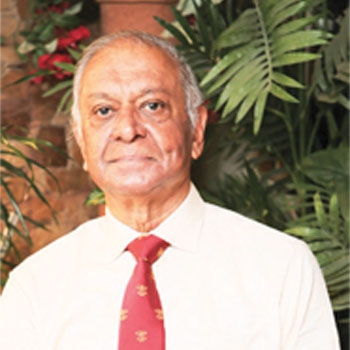
India’s military has consistently performed well in national challenges, reflecting its strong defence capabilities. Along with that, there sure are murmurs that India is a global superpower too – stats suggest that India ranks third after the US and China. This ranking considers factors like manpower, equipment, combat capabilities and organisational strength.
The sector sure does face challenges. There have been hiccups while acquiring high-end technologies, aircraft, and tank engines. Ex-military officials feel that there should be an increase in the budget allocated to this sector, which will assist in implementing modernisation projects and security measures in defence sector. Studies show in the budget 2024-25, the defence sector was allocated Rs 1.44 lakh crores for Indigenous projects, whereas the ideal allocation should be around 2.5-3% of GDP.
To further fortify our country’s defence, it is advised to maintain a greater synergy between stakeholders is imperative, the armed forces should be prepared for multi-domain warfare and operationalise the Theatre Command for optimal synergy.
The defence sector echoes a powerful call for unity, resilience, and readiness, inspiring the youth to embrace the honour of serving in the Forces.
Figure it Out
As per the defence ministry, defence exports have touched a record Rs 21,083 crore (approx. US$ 2.63 Billion) in the Financial Year (FY) 2023-24, a growth of 32.5% over the last fiscal when the figure was Rs 15,920 crore.
Medals and milestones
Over the last ten years, the sports industry has marked significant growth, with all games receiving equal attention from the public. Innovation and automation have swept the sports industry
-Ojas Deotale,
Archer
The last decade has been very exceptional for the sports industry, thanks to the support from the Government of India. Sports was not as impactful in the early days as it is today. Many children are coming forward to pursue their career in some form of sports. Earlier, there was typically only one athlete representing India in a particular sport. Today, however, anyone interested in sports has the opportunity and the platform to participate. They receive a fair chance to learn the game and participate in sports events like national and international sports championships.

Innovation and automation have swept the sports industry. Technologies that have been introduced recently are helping athletes improve their performances on the field and play more effectively.
There has been a significant increase in youth sports participation over the years. In the past, only one or two sports gained popularity in India, but now every sport is receiving equal recognition,coming up with new talent and new success.
Sports, in the past decade, has become a stable and secure field to pursue, as it yields double returns that of initial investment. On the other hand, parents and guardians also play a key role in an athlete’s life to encourage him or her to pursue sports along with their studies. And, as a result, these equal opportunities help children to excel in sports. Further, government initiatives like the Khelo India programme are contributing to significant progress in the sports industry. It supports 32 Khelo India State Centres of Excellence and 1,059 Khelo India Centres. Furthermore, a total of 302 academies have been accredited for training athletes identified under this programme. Today, India is not just building athletes, it is making champions who will make the country proud.
"In the past, only one or two sports gained popularity in India, but now every sport is receiving equal recognition, coming up with new talent and new success"

The government’s flagship project, Khelo India, aims to promote grassroots-level sports and has received the highest allocation of Rs 900 crore from the Ministry of Sports in the Union Budget 2024. In the past, other forms of sports were not considered very important, and the budget was also quite limited. However, now the Government is actively supporting the talented athletes, providing better facilities and a larger budget. From now on, both physically challenged individuals and able-bodied individuals will be treated equally.
In India, the growth of Paralympians is also remarkable. At the 2024 Paris Paralympics, India won a total of 29 medals, which included 7 gold, 9 silver, and 13 bronze. This marked a significant improvement, compared to previous years at the 2016 Rio Paralympics, India secured only 4 medals and placed 43rd, while at the 2020 Tokyo Paralympics, the country won 19 medals and finished in 24th place. This year, India achieved a good number of medals and the government is also supporting Paralympians more than ever.
Figure it Out
As per India Brand Equity Foundation (IBEF), 60% of Indian sporting goods are exported and around 5 lakh people are employed in the sports goods manufacturing sector in India. The Indian sports goods’ market is estimated to grow to US$ 6.6 billion by 2027 from US$ 3.9 billion in 2020-21.
Ushering of BioEconomy
India’s BioEconomy growth, challenges and prospects for achieving a $300 billion target by 2030
-Dr. Ravindra Utgikar,
Director, Bhau Institute of Innovation, Entrepreneurship and Leadership
BioEconomy (BE) is emerging as one of the most promising pathways in India’s pursuit for sustainable development, balancing peopleplant-profit.
India’s BE spans several key subsectors, each contributing significantly to national growth through biotechnology.
Bio-Pharma and Bio-Medical Sector: Includes the development of pharmaceuticals, medical devices, diagnostics, and lab-grown organoids and positions India strongly as hub for affordable biopharmaceuticals. It focuses on areas like cancer immunotherapy, gene editing, precision medicine, and biologics, encompassing MedTech and diagnostics. With a significant 35.65% share, valued at $53.8 billion, this segment is crucial to healthcare and medical innovation.
Bio-Agri: Focusing on agricultural biotechnology, this subsector covers genetically modified crops, precision agriculture, and bio-based products. Highlighting biotech’s role with contribution of 8.24% to the total BE, valued at $12.44 billion, BioAgri centres on agricultural biotechnology and its role in boosting agricultural productivity and resilience.
Bio-Research and Bio-Services (BioIT): This segment involves contract research, clinical trials, biotech software and databases, specialised equipment, and bioscience education services. This segment, valued at $12.1 billion, reflects India’s growing stature as a global hub for R&D services, offering cost-effective solutions in drug discovery and data management.
India’s BE has grown significantly over the past decade, from $10 billion in 2014 to $151 billion by the end of 2023. This has helped India secure a spot among the top 5 BioEconomies in the world. It presently makes up 4.25% of India’s GDP of $3.55 trillion in 2023. The entrepreneurial landscape is flourishing in tandem with this boom, with 1,776 new biotech businesses joining the ecosystem by 2023, bringing the total to 8,531. India’s BE has created employment for more than 40 lakh people and is touching the lives of 2 crore people directly. The steady progression reflects a sustained push toward integrating biotechnology across industries. Over the past decade, it has emerged as a significant force, driven by key sectors such as vaccines, biotherapeutics, diagnostics, bioethanol, enzymatic applications, and bioservices.
"India’s BE represents a remarkable journey of innovation, growth, and increasing global influence"

BioManufacturing (BM), mainstay of BE, uses engineered biological systems to produce commercially important products. BM can play a key role in building a greener and more resilient economy. It provides significant employment opportunities, particularly in Tier-2 and Tier-3 cities. By utilising local resources BM hubs are contributing to regional economic development, thus propagating more inclusive growth.
Progressive government policies have a major role in accelerating growth of any sector and BE is no exception. National Biofuels policy 2018 and SATAT policy, have helped create a growing market for ethanol and compressed biogas, helping reconfigure transportation fuel landscape. The recently launched BioE3 (Biotechnology for Economy, Environment and Employment) Policy is central to India’s transformation as a global hub for BM.
India’s BE represents a remarkable journey of innovation, growth, and increasing global influence and is expected to reach $300 billion by 2030. BE is at the cusp of making a significant contribution to realise the vision of ‘Viksit Bharat’ by 2047. As the world faces pressing challenges like climate change, resource depletion, and biodiversity loss, BE has emerged as one of the most promising solutions for sustainable growth.
Figure it Out
India’s BE has grown significantly over the past decade, from US$10 billion in 2014 to US$151 billion by the end of 2023. This has helped India secure a spot among the top 5 BioEconomies in the world. It presently makes up 4.25% of India’s GDP of US$3.55 trillion in 2023.
Learning and inclusive growth
HR plays a crucial role in encouraging life-long learnings, inclusivity, diversity and growth
-Rajesh Kumar Singh,
Senior Vice President, Global Head HR, KPIT
We need learning mindset and depth in competence, to find solutions to complex problems in view of unprecedented disruptions reflected in megatrends in AI, machine learning, digital platform players, climate challenge, declining demographic in most of developed world, China, Japan and Asian tiger economies such as Singapore, Taiwan, South Korea. Each of these megatrends call for calibrated action for Human Resource Development across private sector, public sector, nonprofit, regulators, government, and enlightened section of society.

What happened in the last decade – Tech adoption has been significant with almost all organisations adopting AI chatbots, automating many routine tasks and improving productivity. Skill building on scale has not happened in India despite attempt by government, as our foundation of primary and secondary education is still very weak with quality of teachers, and similar trend is in engineering and other graduate streams too. Short term focus on shareholder value creation has put talent at the bottom of pyramid with top 8 out of 10 companies by market capitalisation (Nvidia, Tesla, Alphabet, Amazon, Apple, Microsoft) firing employees in tens of thousands, what to speak of companies which are not that big, as focus shifts to bottom-line at any cost. This has eroded trust with Gallup conveying two thirds of employees are disengaged across the world. The sad part is this is unlikely to change, and individuals have to craft their own career and life.
"What lies within the control of individuals is sharp focus on making themselves better through the mindset of lifelong learning. It is also vital to remember that lifelong learning is a journey, not a destination"

What lies ahead – Tech disruption is going to be bigger with most services being taken by AI in the next few years. Advancement in robotics with AI will mean significant pressure on employment opportunities in manufacturing, agriculture too. Quality of education and health will leap manifold as AI will provide customised individual solutions. This will also cause most organisations and existing business models to vanish with a few winners taking all—some sort of universal basic income will be needed in democracies. The inequality will increase only with disproportionate premium to those with super skills which are rare.
Having said that, what lies within the control of individuals is sharp focus on making themselves better through the mindset of lifelong learning. It is also vital to remember that lifelong learning is a journey, not a destination. People have to identify areas of interest or skills where they want to develop and set specific, measurable, achievable, relevant, and time-bound (SMART) goals. We are living in an era where all knowledge is available because of the rise of digital platforms so getting access is not an issue. By setting aspirational goals, embracing lifelong learning mindset, and creating supportive environments, where education, exposure and experience combined with regular deep reflections, practiced both by individuals and organisations, they can thrive in an ever-changing world.
Figure it Out
According to India Skills Report, the Indian HR industry is worth US$ 15 billion and employs over 6 lakh people. According to a report by Research and Markets, the HR tech market in India is expected to reach US$ 34 billion by 2026.
Made in sunny India
With India’s National Energy Policy (NEP14) making the shift from a coal-dominated power mix to a renewable energy-based one, there’s lots of scope for solar power to shine bright
-Gautam Mohanka,
CEO, Gautam Solar
Solar energy is poised to play a crucial role in shaping the Indian economy over the next ten years, driven by the urgent need for sustainable development and energy security.
As India aims to increase its energy capacity and reduce reliance on fossil fuels, harnessing solar power offers a viable solution to meet the rising energy demands of a growing population. The abundance of sunlight across the country positions solar energy as a reliable and renewable source, potentially transforming rural economies through job creation in manufacturing, installation, and maintenance of solar technologies. Furthermore, investing in solar infrastructure can enhance energy access in remote areas, promote energy independence, and contribute to significant reductions in greenhouse gas emissions.

India is committed to triple its renewable capacity by 2030, a goal that requires significant annual capacity additions. The country’s solar energy sector has seen a significant increase, from 2.6 GW in 2014 to 90.76 GW as of September 2024, reducing reliance on coal and other fossil fuels. The Jawaharlal Nehru National Solar Mission, launched in 2010, has been central to India’s solar growth.
Over the years, the cost of solar power in India has plummeted remarkably, making it more competitive than conventional power and reducing energy imports. The solar industry has created thousands of jobs in installation, maintenance, manufacturing, and supply chain activities. Due to its brilliant performance, the sector has attracted significant foreign direct investment year after year, boosting the economy and domestic manufacturing. With increasing solar energy production, India has reduced its dependence on imported oil and gas, improving its balance of payments and reducing vulnerability to international energy price shocks.
India’s solar energy sector has seen remarkable growth and transformation over the past decade, driven by government policies, technological advancements, and a growing commitment to renewable energy.
"With increasing solar energy production, India has reduced its dependence on imported oil and gas, improving its balance of payments and reducing vulnerability to international energy price shocks"

After the ALMM list came out in April 2024, there has been an increase in the preference for domestic solar modules over Chinese modules. This change shows a growing effort to support local manufacturing and boost energy independence in the solar industry. The demand for Chinese modules has decreased, which is a positive sign for sustainable practices and promoting domestic products.
The Ministry of New and Renewable Energy (MNRE) and the Solar Energy Corporation of India (SECI) have played a crucial role in India’s rapid adoption of solar power. The country has become the 5th largest solar installer globally due to aggressive targets, policy implementation, and public awareness campaigns. State governments have also contributed to the solar industry’s growth, as stable government policies are essential for accelerating adoption.
India’s National Energy Policy (NEP14) aims to shift from a coal-dominated power mix to a renewable energy-based one, focusing on solar power. The plan anticipates a surge in solar power’s share from 5% to 25% between 2022 and 2032, marking a pivotal period of expansion. Strong policy backing and international collaborations support this shift to cleaner energy.
Figure it Out
As per the India Brand Equity Foundation (IBEF), India was ranked fourth in solar power capacity as of 2024. In the Interim Budget for 2024-2025, the fiscal allocation for solar power grid infrastructure development surged to₹8,500 Crore, a significant rise from the previous year’s Rs. 4,970 Crore.
Flights of expansion
The year 2027 might just be the year of Indian aviation on the backdrop of a clear-cut civil aviation policy and the introduction of Air India and Indigo’s long-haul aircraft
-Jitender Bhargava,
Former Executive
Director, Air India
On Oct 15, 1932, JRD Tata operated the first flight, heralding the birth of Indian aviation. Oct 8, 2021— one week short of 89 years—the disinvestment of Air India added a new chapter in Air India’s history because it meant that no more would the Gulf carriers or the Southeast Asian carriers dominate the Indian skies. Air India, under Tatas, showcased its willingness and wherewithal to provide services to Indian-origin traffic; it was very much a Modi Hai Toh Mumkin Hai moment.
"We are third largest in the domestic market, but still in double digits as far as international markets"
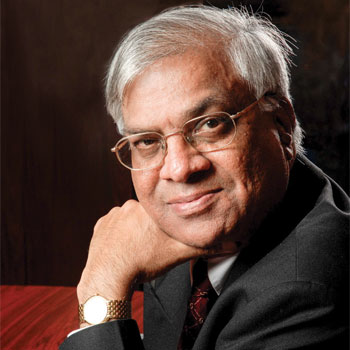
Big moments in Indian civil aviation:
- The first major change that came India’s way was PM Modi being very judicious about granting bilateral rights to foreign carriers. You need to understand the full importance of this. When foreign carriers get the rights, the employment and other benefits go to their countries, and not India. When you refuse them bilateral rights, saying instead, we want Indian carriers to grow, the employment—from the pilots to the engineers, ground staff, maintenance and allied crew—come to India. Then we look at the maintenance of aircraft or MROs. Aircraft from India would go abroad for maintenance; now taxation and duties on spare parts have been reduced as well, making it more lucrative for aircraft to be maintained in India.
- Though the Prime Minister’s Atmanirbhar Bharat campaign came later, he was clear that foreign carriers would not exploit Indian markets. In 2027, India will see the results of this policy. By then, Air India’s and Indigo’s long haul aircraft will come, and between the two airlines, they will operate non-stop flights to Europe and the US obliterating the need for going via Gulf or the European countries. So, the vast Indian diaspora in the US will be served well by the Indian carriers.
- We did not have a Civil Aviation Policy for 30 long years—right up to 2016. The new policy clearly stated the way forward. Since the government understood aviation is the catalyst for economic growth, UDAN scheme was launched in 2017 as part of the Civil Aviation policy. Under this, it was understood that both underserved and unserved airports needed to be served. So, the concept of viability funding, costing shared by state governments came up. While the concept was great, implementation-wise it wasn’t so because flying between cities like say Kolhapur and Chhatrapati Sambhaji Nagar may not be a viable proposition for an airline. Some bid and never got going, some operated and shut down operations, some bid and are operating.
- We have double the airports that we did in 2014. Unlike the earlier times, when new airports came in, the old airports were rendered obsolete. But now that is not the case. When the new Goa airport was inaugurated, the old airport also continued. Thus, the infrastructure is not being wasted.
- Now, let us come to the disinvestment of Air India, again. As I have said on TV, the moment Tatas won the bid, it was a great moment. Now, Government of India doesn’t have to provide financial support, the Tatas have a placed an order for 400 plus aircraft. Could Air India have done this as a government airline? The answer is no. To minimise the stranglehold of the Gulf carriers on the Indian market, it was essential for Air India to be divested and be taken over with someone with deep pockets and ability to take losses, before it can flourish.
The Tatas have signed a deal with Airbus to prepare pilots in India. Thus, the inauguration of Airbus’ first fully owned headquarters and training centre in Asia near Terminal 3, New Delhi International Airport was a seminal moment. This cutting-edge facility, strategically located within the airport complex, can train 800 pilots and 200 technicians annually.
So, in totality what India has achieved is phenomenal success. We are third largest in the domestic market, but still in double digits as far as international markets.
Figure it Out
As per the India Brand Equity Foundation (IBEF), the country will become the third-largest aviation market in terms of passengers by 2024. India will require over 2200 aircraft by 2042. By 2028, the MRO industry is likely to grow over US$ 2.4 billion from US$ 800 million in 2018.
Innovate to elevate
Emerging Nano and Nutra-therapeutics, including CAR-T cell therapies, signal new avenues for the Indian pharmaceutical market’s (IPM) domestic and global reach
-Samar Ghosh,
President Domestic Business
A.C., Pulse Pharmaceuticals
Resolving problems, seeking and re-inventing evidence-based innovative solutions hallmarks India’s healthcare sector. A recent report reveals a six-fold FDI (foreign direct investment) increase in India’s drugs and pharmaceuticals sector since 2018-19, now contributing around 3% of the total FDI. The sector, ranked 3rd by volume worldwide, operates in a US$ 26 billion value-driven market.
The sector has been riding on incremental and disruptive innovations, is committed to affordable quality healthcare expansions, following the ‘Make in India’ strategy. Post-Covid demand, a stable government, swift turnaround, and a strengthened public-private partnerships have driven growth locally and globally. India’s new and credible global perception, have reinforced the ‘pharma’ brand wagon onshore and offshore.
The IPM sector demonstrated remarkable agility and resilience over the past decade, successfully navigating a landscape marked by disruptive events. From shifting market dynamics, price control measures, global supply chain disruptions and rapid technological advancements, the industry acknowledged significant challenges, embracing rapid adaptations. The sector revisited rationale in several fixed-dose combinations and a serious shift towards generics, and limited blockbuster molecules. Despite the shifts, the IPM has maintained a stable (CAGR) of approximately 10% by value, underscoring its solid foundation and adaptability. Although volume growth lagged behind expectations, the sector stabilised without any significant bubbles or downturns. India’s 1.45 billion population contributed to a rise in Joint Commission International (JCI)-accredited hospitals, catalysing a vibrant medical tourism sector. India has become a key player in global healthcare, offering cost-effective solutions across a wide range of specialties and alternative medicines. The healthcare access gaps in urban-rural geographies, high doctor to patient ratio, and higher out of-pocket expenses and overall rising treatment costs, are a few concerns. However, a transformative decade ahead beckons India’s healthcare sector. Today, quality is essential, not optional. India’s evolving market embraces innovators, branded generics, super generics, and generics—all playing unique roles.
"Over recent decades, India’s commitment to reducing the cost of critical medications by up to 99% has disrupted monopolies"

India excelled as a significant global medical superpower, providing affordable essential medicines for HIV, cancer, hepatitis C, tuberculosis and malaria. The sector played the masterstroke during the pandemic, when the entire world grappled under the Covid-19 onslaught. India produced large-scale, high-quality vaccines, drugs (bulk, OTC, biosimilars and biologics), engaged in contract research and mobilised crucial medical items in the most pressing time.
From iodine fortification to TB mitigation and polio eradication, India’s enduring commitment to “excellence” transformed its position to a true medical superpower, and a leading global healthcare hub. Over recent decades, India’s commitment to reducing the cost of critical medications by up to 99% has disrupted monopolies, making essential drugs accessible to millions worldwide. A skilled workforce and innovation-driven infrastructure has propelled India to the top, with the highest number of US FDA-certified pharmaceutical manufacturing facilities outside the United States.
During Covid-19, the domestic industry reprioritised brand building, regulatory frameworks, and innovation, enhancing R&D, supply chains, and market strategies to stay competitive. Post-pandemic, focus is on high-quality products, improved drug delivery, and a unified healthcare system. Rising public awareness on illness, costs and quality of life, and insurance access have driven demand for quality care. A massive tectonic shift has transformed the domestic healthcare market, emphasising proactive, preventive, and therapeutic approaches.
Figure it Out
As per Union Ministry of Chemicals and Fertilisers, India’s pharmaceutical industry has gained international recognition as the ‘Pharmacy of the World’. India’s drug and pharmaceutical exports soared from US$15.07 billion in 2013-14 to US$27.85 billion in FY 2023- 24. India ranks third globally in drug and pharmaceutical production by volume.
Green is the new Gold
Capacity building across corporates and grassroots for environmental sustainability is the key, Corporate Social Responsibility (CSR) should align towards societal investment, develop responsible citizens and harness this social capital.
-Dr. Vinitaa Apte,
Founder-Director, TERRE Policy Centre
India has progressively embraced environmental and sustainability trends in the past decade. The government’s push for renewable energy, has seen solar and wind power capacity increasing by over 500% since 2010. With efforts to promote electric vehicles, India has set ambitious targets to reduce greenhouse gas emissions and introduced the “Swachh Bharat Abhiyan” to improve waste management and sanitation and other green energy alternatives.
Collective consciousness enables companies to encourage their employees to actively participate in sustainable environmental drives. Cultivating individuals towards a more holistic approach is more beneficial for large-scale impacts. TERRE has been supporting initiatives by their employees and their family members in rural India.
A turning point was set with the government’s 2014 and 2021 amendments to the Companies Act of 2013. Section 135 of the Companies Act, 2013 which mandates corporates to pledge at least 2% of their profits for social benefits, which has been implemented rigorously in the past 10 years. Indian companies spent about USD 1.43 billion on CSR in 2014, and by 2019 their spending grew 85% to USD 2.67 billion as per a KPMG report “Ten years of CSR in India: What do organisations need today?”
"Corporates are trying to change their agenda towards green initiatives, but it’s not only the responsibility of CSR department. Finally everyone needs to understand that, not a single business can survive without a healthy environment"

Solar energy comes upfront as the cheaper and sustainable mode in meeting carbon emission reduction targets. Likewise wind and biogas have played parallel pathways in power generation without compromising the environment. While solar power reached 30% of the 2022 target of 100 GW, contributing 38% to the renewable energy mix, the play can be variable nationwide, based on the respective local geographies. In 2010, the total installed solar capacity was 10 MW and in 2016, the installed capacity stood at 6000 MW, a 600 times increase in six years. While micro plastics are officially banned, local consciousness has yet to set in 100%. It is encouraging to see waste segregation norms gaining momentum in recent times.
Clean water initiatives, pollution cleanup and reducing waste has seen much campaigning. However, attempts at CO₂ sequestration is at its nascent stages. India emitted 2.95 gigatonnes (Gt) of CO₂ in 2018, which is expected to rise with continued growth. Carbon capture and storage (CCS) projects are vital for India, since renewable power and fuel transitions alone does not lead to net-zero emissions. CCS technologies allow residual CO₂ emissions to be captured and permanently stored in underground reservoirs. However, India is still in the early stages of CCS development, with few studies successfully evaluating suitable CO₂ reservoirs and their storage potentials.
The India Business Council estimated that around 150 million trees were planted by Indian companies between 2015 and 2020. The numbers are perhaps higher, as several corporates initiated tree-planting programmes in recent years, to offset their carbon footprint. However, tree plantation drives should not merely portray companies as environment-friendly for impactful annual report profiles.
The much touted 2022 Sovereign Green Bonds Framework has yet to see some clarity. In April 2023, the RBI’s proposal for a framework for acceptance of "green deposits" or "carbon credits" to regulated entities developed a green financial ecosystem in the country. Under the framework, regulated entities can offer green deposits to customers, protect interest of the depositors, aiding their sustainability agenda. It is seen as a conduit to increase the credit flow to green activities and projects. However, sustainable credits have yet to excite the corporate sector and investors in taking the greater leap.
Figure it Out
India's apex public policy think-tank, NITI Aayog, released its latest Sustainable Development Goal (SDG) Index in July, with India's national score reaching 71 in 2023-24, up from 66 in 2020-21 and 60 in 2019-20, showing significant progress in areas like poverty eradication, decent work, economic growth, climate.
Real Estate reimagined
From regulatory reforms to shifting consumer preferences, various factors have contributed in remarkable transformation of real estate sector over a decade
-Harish Navale, Partner, Harivishva
Developers
Over the past decade, India’s real estate sector has gone through some exciting changes. It has transformed from being a bit unorganised and opaque into a more structured and consumer-friendly industry, maturing in significant ways. As I explore this journey, it’s clear that a mix of regulatory reforms, shifting consumer expectations, and emerging trends have come together to shape this transformation.

The last ten years have been a turning point for real estate in India. One of the most impactful changes was the implementation of the Real Estate (Regulation and Development) Act (RERA) in 2016. This has really boosted transparency and accountability, making buyers feel more secure about the timelines and quality promised by developers. We’ve also seen urbanisation and infrastructure growth, especially in Tier-2 and Tier-3 cities, which has expanded the market. Affordable housing has become a top priority, thanks to initiatives like the Pradhan Mantri Awas Yojana (PMAY). Plus, technology has become a crucial part of real estate, with tools like virtual tours and data-driven marketing transforming the buying experience into something more engaging and fun.
Talking about the current trends driving the real estate market today, sustainability is at the forefront, with developers putting a spotlight on green buildings and energy-efficient designs. The shift to remote work after the pandemic has also changed demand, with more people seeking spacious homes in suburban or peripheral areas.
We’re also noticing a rise in co-living and co-working spaces, which attract younger generations looking for flexibility and affordability. Luxury real estate has experienced a boom too, with high-net-worth individuals investing in premium properties and vacation homes. Additionally, Real Estate Investment Trusts (REITs) have opened new doors for retail investors, allowing them to dive into the commercial real estate sector.
"One of the biggest challenges for developers is finding the right balance between profitability and social responsibility"

Consumer behaviour in real estate has also evolved immensely over the past decade. Today’s buyers are much more informed and expect transparency in every part of their purchasing journey, from legal clearances to project timelines. They’re not just looking for a house; they’re searching for a lifestyle.
One of the biggest challenges for developers is finding the right balance between profitability and social responsibility. I believe that a holistic approach can help achieve this balance. Investing in affordable housing, for example, helps meet a societal need while tapping into a huge market segment supported by government incentives. Sustainability plays a vital role here too. By incorporating eco-friendly materials, renewable energy solutions, and waste management practices, developers can lessen their environmental impact while aligning with consumer expectations.
On the other hand, government policies have played a crucial role in shaping the direction of India’s real estate market. The launch of RERA has restored buyer confidence by ensuring greater accountability. Tax incentives on housing loans and reduced GST for affordable housing projects have encouraged more people to own homes. Initiatives like the Smart Cities Mission and infrastructure development have spurred demand for real estate in emerging regions. Liberalised FDI norms in construction development have attracted global investors, further fuelling growth. Plus, the government’s focus on affordable housing has brought the dream of homeownership closer for millions of Indians.
Developers who can adapt to the changing dynamics while staying in tune with government policies will lead the way.
FIGURE IT OUT
As per the India Brand Equity Foundation (IBEF), by 2040, the real estate market will grow to ₹65,000 crore (US$ 9.30 billion) from ₹12,000 crore (US$ 1.72 billion) in 2019. Real estate sector in India is expected to reach US$ 1 trillion in market size by 2030.